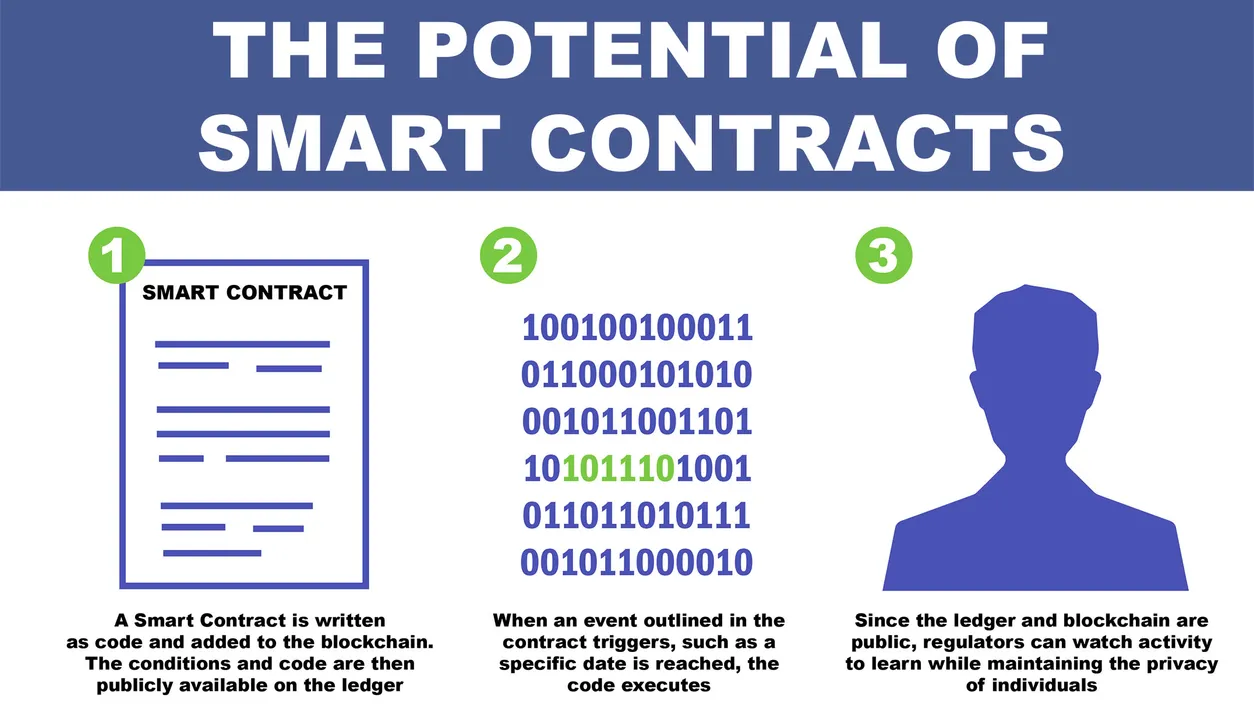The Potential of Smart Contracts in Healthcare

Imagine a healthcare environment where physicians are paid instantaneously after office visits or procedures. How comforting it would be for a patient to get preapproval for an MRI within minutes instead of days or weeks. How vital is immediate access to medical records when traveling abroad, particularly during an emergency?
All of these are possible utilizing the concept known as smart contracts.
BlockChain Simplified
In simple terms, a blockchain is a distributed ledger used to record data and transactions. By duplicating this ledger across computer networks, blocks of data are verified and then become immutable. Attempts to change a block of data are disallowed, as none of the other computers show this change. Blocks of data are added and chained together - hence the term. Once recorded on the blockchain, data are permanent and viewable to all.
What Is A Smart Contract?
The simplest explanation is a digital If-Then statement. Many will be familiar with this from math or introductory programming in elementary school. Others will instantly recognize this as a primary driver of the IFTT app platform centered around efficiency.
Smart contracts are written in computer code based on set parameters agreed upon by users. Just as in a written paper contract, once specified conditions are met, the full terms of the contract are executed. The applications are endless across all industries and occupations, including healthcare.
Insurance Simplified
When is the last time people read the fine details of their insurance policy coverage?
This data can be stored easily in a patient's chart on the blockchain. When an approved procedure is scheduled, the need for paper prior authorization is obsolete and electronic authorization can be rapidly completed using a smart contract.
The patient undergoes the approved medical procedure, the smart contract executes and pulls the pertinent insurance coverage data, and payment is released to the facility performing the procedure.
Please Can My Patient Have An MRI?
How often are patients left waiting and wondering if insurance will authorize the important test ordered by their doctor?
This process remains antiquated and involves many steps, including a phone call or even an appeal after an initial denial. The slow manual processes requiring intermediaries are outdated.
Smart contracts pull pertinent data from the medical record that satisfies predetermined criteria, allowing authorization in minutes vs. days or weeks. The synchronization of workflows between entities and organizations removes inefficient manual processes, time delays, and lost data. Transactions are secure and anonymous, occurring rapidly instead of days, weeks, or months later.
Only The Little White Pill - Or Is It Green?
As members of society age, interactions grow exponentially with providers and health systems. Surgeries, procedures, consultations, and medication changes quickly become difficult to track. According to a recent study, over 90% of hospitalized patients cannot recall one or more of their medications. The current system is broken and dangerous.
Storing patient data on the blockchain, combined with the power of smart contracts, can grant access to those with permission to view and keep records up-to-date. Ready access is assured in times of emergency. Authorized parties can add to the medical record and make updates backed up on the blockchain. The days of multiple paper copies of scratched-out meds will end. Changes are viewable to all the patient's caregivers.
Smart contracts can remove the friction when multiple parties are processing various aspects of a patient's care. Data is current, verified, and accessible, based on the permissions in the smart contract. The ridiculous amount of time spent searching for a signed HIPAA form or completing records requests can be repurposed.
Who's Got My Paycheck?
A hospital agrees to pay a GI doctor $X per colonoscopy. The compensation is independent of insurance payments and only dependent on the patient showing up and the procedure completion. Upon procedure completion, the EMR is updated. The smart contract criteria are met, and $X is released to the physician. The patient's copayment is captured and their insurance coverage amount processed.
Imagine a medical model paying caregivers in the trenches daily instead of monthly or more. Smiles abound.
100 Billion and Counting
Many naysayers call cryptocurrency and the blockchain a fad. The global capital invested in the blockchain ecosystem speaks for itself. The proverbial horse is not going back in the barn. If you doubt that, head on down to the last Blockbuster on the planet to get a VHS tape to watch tonight.
Smart Integrated Wearables
Advances in EMR systems have reshaped how data is retrieved. For example, query a patient's chart with CHF to determine average heart rate and heart rate parameters during cardiac rehab. Integrate this data using a smart contract to a wearable device. When safe heart rate levels are exceeded, an alarm is triggered. The patient is alerted and seeks advice or immediate care. The smart contract can be written to alert medical staff to contact the patient or deploy an ambulance. Disaster averted.
Dangling Carrots
Patient compliance remains a challenge. Our current system is geared toward sickness, not health optimization. The language created in a smart contract can offer tangible rewards for patients who meet specific metrics as agreed upon by their care team. For example, when the next two A1c values are below 7.0, the patients receives their incentive reward for a month free at their current health club and movie pass.
Lean In
Blockchain and cryptocurrency are not new but are still in their relative infancy. The intellectual manpower and capital invested have already caught the attention of the banks, investment giants, and regulators. This game is still in the 1st quarter, and it's time to suit up and get on the field - healthcare and your patients need you on the digital gridiron.
Related Posts
